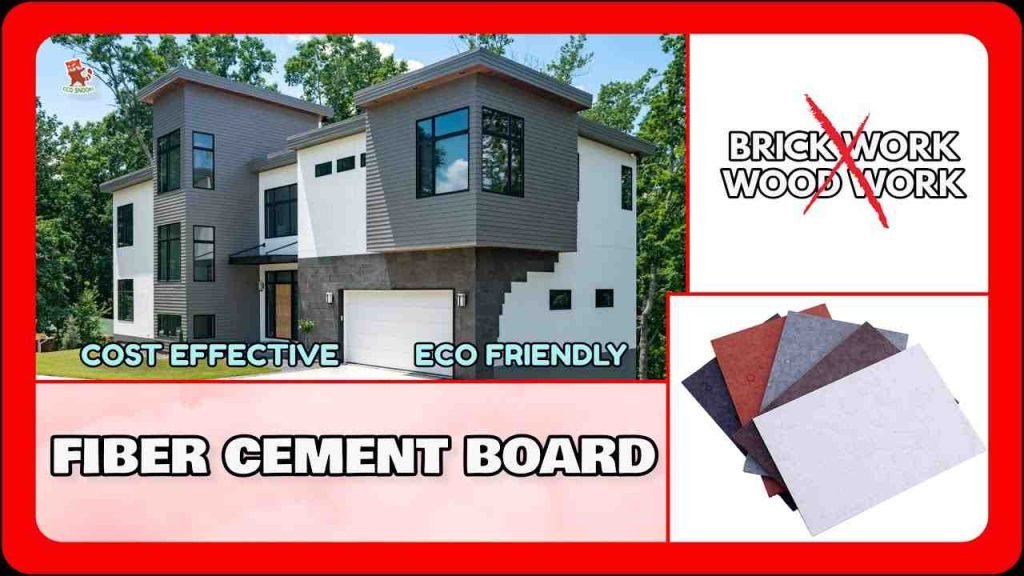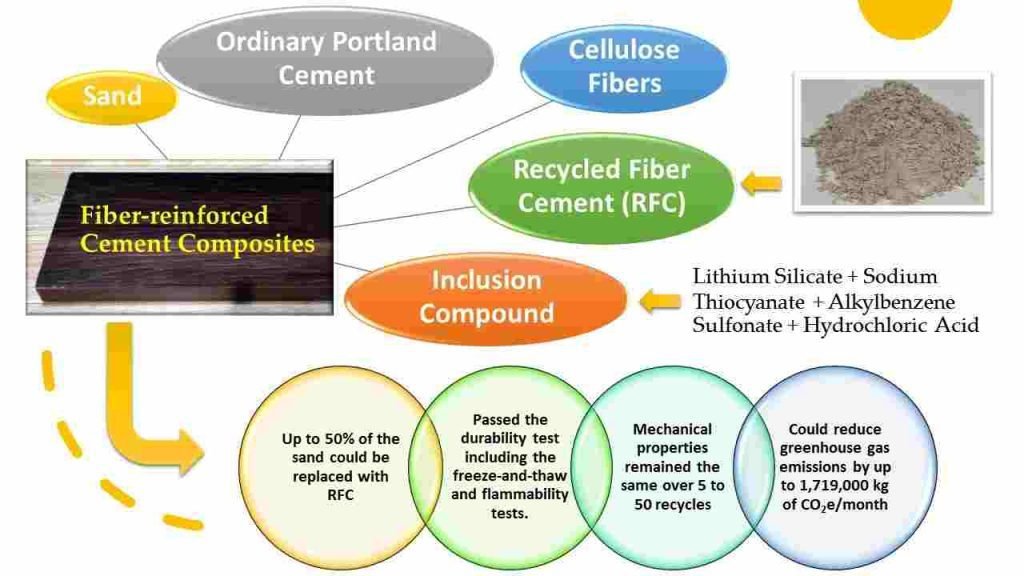Considering fiber cement siding for your home? Let’s dive in and explore whether it’s a good fit for your climate. Fiber cement siding is known for its durability, versatility, and low maintenance, making it a popular choice for many homeowners. However, its performance can vary depending on factors like climate, humidity levels, and exposure to extreme weather conditions. In this guide, we will delve into how fiber cement siding holds up in different climates, offering insights to help you determine if it’s the right choice for your home’s exterior with the help of BK’S Remodeling & Construction.

Factors such as temperature fluctuations, humidity levels, and exposure to harsh weather conditions play a significant role in determining its suitability for your specific climate. Gathering insights into how fiber cement siding fares in various environmental conditions can help you assess its resilience and longevity in your area, ensuring that your home remains protected and looking its best for years to come. Similarly, exploring concrete services tailored to your climate ensures you choose materials that withstand temperature changes, moisture levels, and other environmental factors, providing both durability and aesthetic appeal to your home’s interior.
Understanding Fiber Cement Siding: Features and Benefits
Fiber cement siding is a composite material made from cement, sand, and cellulose fibers. It offers exceptional durability, resistance to pests, fire, and rot, making it a popular choice for homeowners. Additionally, fiber cement siding is available in a variety of textures and colors, allowing for versatile design options. Its low maintenance requirements and long lifespan contribute to its appeal, providing a cost-effective cladding solution for many properties. Understanding the features and benefits of fiber cement siding helps homeowners make informed decisions about whether it’s the right choice for their homes.
Factors Affecting Fiber Cement Siding Performance
Several factors influence the performance of fiber cement siding, including climate, installation quality, and maintenance practices. Climate plays a significant role in how fiber cement siding performs over time, with extreme temperatures, humidity levels, and exposure to harsh weather conditions impacting its durability and appearance. Proper installation by experienced professionals ensures the siding is correctly fitted and sealed, minimizing the risk of moisture infiltration and structural issues. Regular maintenance, such as cleaning and inspections, helps prolong the lifespan of fiber cement siding and ensures it continues to perform optimally throughout its service life. By considering these factors, homeowners can maximize the benefits of fiber cement siding for their properties.
Assessing Climate Suitability for Fiber Cement Siding
Before choosing fiber cement siding for your home, it’s essential to assess its suitability for your climate. Different climates pose unique challenges to exterior cladding materials, including temperature fluctuations, humidity levels, and exposure to precipitation and UV radiation. Fiber cement siding performs well in many climates due to its durability and resistance to moisture, rot, and pests. However, extreme weather conditions, such as prolonged exposure to high humidity or frequent freeze-thaw cycles, can affect its performance over time. Consulting with a local contractor or siding specialist can provide valuable insights into how fiber cement siding fares in your specific climate and whether it’s the right choice for your home.
Performance of Fiber Cement Siding in Hot and Humid Climates
Hot and humid climates present specific challenges for exterior building materials, including fiber cement siding. In these environments, high humidity levels and frequent rainfall can increase the risk of moisture-related issues, such as mold, mildew, and rot. However, fiber cement siding’s inherent resistance to moisture makes it well-suited for such conditions. Proper installation and maintenance are essential to ensure the siding remains watertight and resistant to fungal growth. Additionally, selecting lighter colors and textured finishes can help mitigate heat absorption and reduce thermal expansion and contraction, prolonging the lifespan of fiber cement siding in hot and humid climates.

Performance of Fiber Cement Siding in Cold and Wet Climates
Cold and wet climates present their own set of challenges for exterior cladding materials like fiber cement siding. In these regions, frequent rainfall, snowfall, and freeze-thaw cycles can increase the risk of water infiltration, cracking, and structural damage. However, fiber cement siding’s resistance to moisture, rot, and pests makes it a suitable option for cold and wet climates. Proper installation techniques, including ensuring adequate drainage and sealing, are crucial to prevent water penetration and maintain the siding’s integrity. Regular inspections and maintenance, such as caulking and painting, can further protect fiber cement siding from the effects of cold and wet weather conditions, ensuring its long-term performance and durability.
Durability of Fiber Cement Siding in Extreme Weather Conditions
Fiber cement siding is renowned for its durability and ability to withstand a wide range of weather conditions, including extreme heat, cold, wind, and precipitation. Its composition of cement, sand, and cellulose fibers provides exceptional strength and resistance to impact, fire, and pests. Properly installed and maintained fiber cement siding can last for several decades, even in the most challenging environments. However, exposure to prolonged periods of extreme weather, such as hurricanes, tornadoes, or severe storms, can cause damage to any exterior cladding material, including fiber cement siding. Homeowners in regions prone to such events should take appropriate precautions, such as reinforcing siding installation and regularly inspecting for signs of damage.
Maintenance Considerations for Fiber Cement Siding in Different Climates
Proper maintenance is essential to ensure the long-term performance and appearance of fiber cement siding, regardless of the climate. Regular cleaning, inspections, and repairs help prevent moisture infiltration, mold growth, and structural issues. In hot and humid climates, where moisture-related problems are more common, it’s crucial to keep the siding clean and free of debris to prevent fungal growth. In cold and wet climates, where freeze-thaw cycles can cause cracking and damage, inspecting for signs of water damage and promptly addressing any issues is essential. Additionally, periodic painting or resealing can help protect fiber cement siding from UV radiation and maintain its aesthetic appeal over time.
Comparing Fiber Cement Siding with Other Cladding Options
When choosing exterior cladding for your home, it’s essential to consider how fiber cement siding compares to other options in terms of performance, durability, cost, and aesthetics. While fiber cement siding offers many benefits, such as durability, resistance to fire and pests, and low maintenance requirements, it may not be the best choice for every homeowner or climate. Other cladding materials, such as vinyl, wood, metal, or brick, have their own advantages and disadvantages to consider. Consulting with a siding specialist or contractor can help you evaluate the pros and cons of each option and determine the best fit for your home’s specific needs and preferences.
Tips for Enhancing Fiber Cement Siding’s Performance in Any Climate
To maximize the performance and longevity of fiber cement siding in any climate, homeowners can implement various tips and strategies. Proper installation by experienced professionals ensures that the siding is correctly fitted, sealed, and ventilated to withstand weather elements effectively. Regular inspections and maintenance, such as cleaning, caulking, and repainting, help identify and address issues before they escalate.
Professional Installation and Warranty Coverage for Fiber Cement Siding
Hiring experienced professionals for the installation of fiber cement siding is essential to ensure proper fitting, sealing, and ventilation, maximizing its performance and longevity. Professional installers have the expertise to handle the intricacies of siding installation, such as cutting, fastening, and flashing, to prevent water infiltration and structural issues. Additionally, many manufacturers offer warranty coverage for fiber cement siding, providing protection against defects in materials and workmanship. Understanding the terms and conditions of the warranty, including coverage duration and exclusions, is crucial for homeowners. By choosing reputable installers and confirming warranty coverage, homeowners can have peace of mind knowing that their fiber cement siding is installed correctly and backed by reliable protection.
Long-Term Cost Analysis: Is Fiber Cement Siding Worth It for Your Climate?
Before investing in fiber cement siding, it’s essential to conduct a long-term cost analysis to determine its overall value for your specific climate. Consider factors such as initial installation costs, maintenance expenses, and potential savings over time compared to other siding materials. While fiber cement siding may have a higher upfront cost than alternatives like vinyl or wood, its durability and low maintenance requirements can lead to significant cost savings in the long run. Additionally, factor in any potential energy efficiency benefits, such as improved insulation and reduced heating or cooling costs. By weighing these factors against the anticipated lifespan and performance of fiber cement siding in your climate, homeowners can make an informed decision about its financial viability.
Conclusion
In conclusion, fiber cement siding offers a durable and versatile cladding option for homes in various climates, with its resistance to moisture, pests, fire, and rot making it a popular choice among homeowners. However, its performance is influenced by factors such as climate, installation quality, and maintenance practices. Assessing its suitability for specific climate conditions, such as hot and humid or cold and wet, is crucial for ensuring long-term durability and aesthetics. By following proper installation techniques, conducting regular maintenance, and considering other cladding options, homeowners can enhance the performance of fiber cement siding and protect their homes against the elements. Ultimately, with careful consideration and upkeep, fiber cement siding can provide lasting protection and aesthetic appeal for homes in diverse environmental settings.
FAQs
Is fiber cement siding suitable for all climates? Yes, fiber cement siding is suitable for various climates due to its durability and resistance to moisture, pests, and extreme temperatures.
How does fiber cement siding perform in hot and humid climates? Fiber cement siding performs well in hot and humid climates, thanks to its moisture-resistant properties and ability to withstand fungal growth.
Does fiber cement siding fare well in cold and wet climates? Yes, fiber cement siding is resistant to moisture and freezing temperatures, making it a suitable option for cold and wet climates.
What maintenance is required for fiber cement siding? Regular cleaning and inspections are recommended to prevent moisture infiltration and maintain the siding’s integrity in any climate.
Can fiber cement siding be compared to other cladding options? Yes, fiber cement siding can be compared to materials like vinyl, wood, metal, and brick, considering factors such as performance, durability, cost, and aesthetics.
